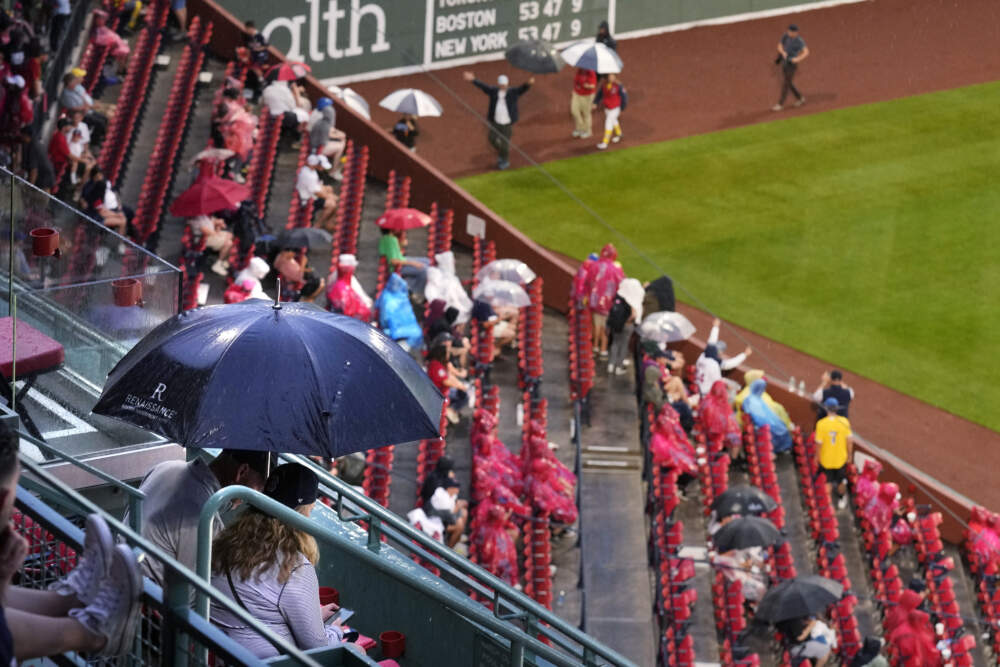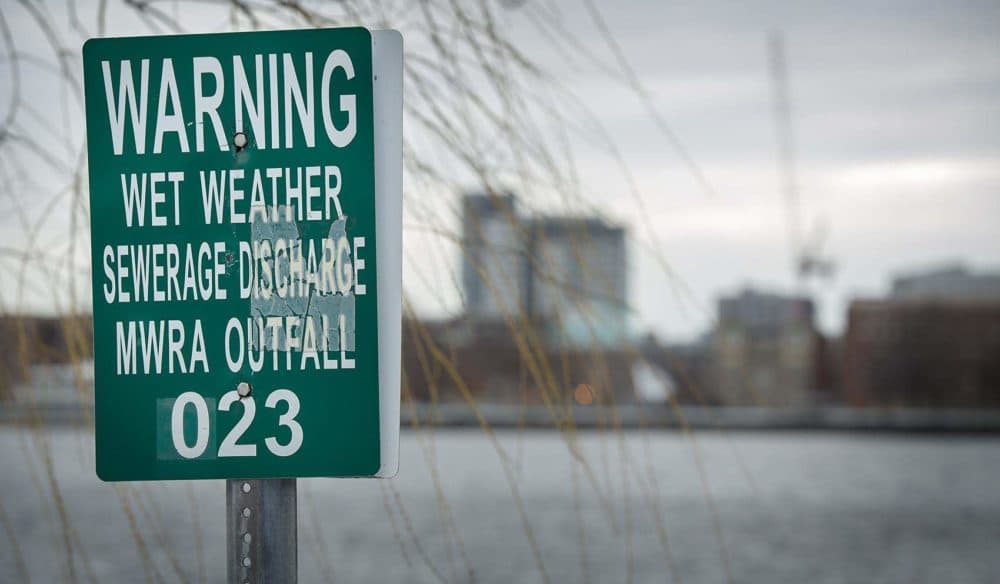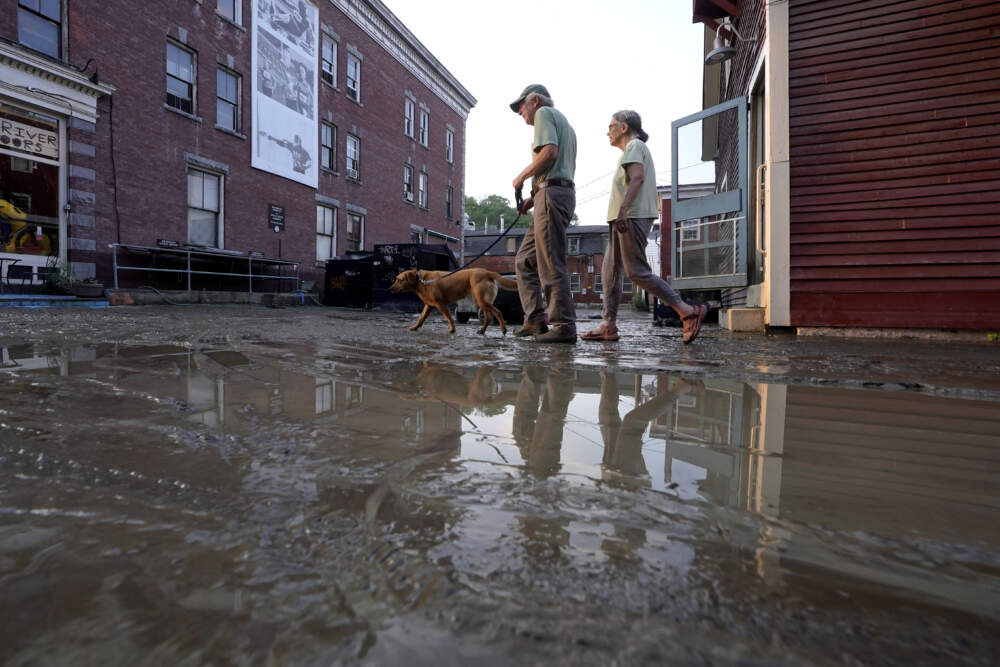Advertisement
After all that rain, Boston had its second wettest July on record

It’s been a summer of climate extremes. Relentless heatwaves, wildfires, record-breaking ocean temperatures — and here in the Northeast, a whole lot of rain.
Boston typically receives an average of 3.27 inches of rain during July. This summer, the city got 10.43 inches, making it the second rainiest July on record. (July 1921 still holds the record; that month, Boston got 11.69 inches of rain.)
Worcester and Providence, Rhode Island, also had their second wettest July on record, with 12.3 and 8.37 inches of rain, respectively. Hartford, Connecticut broke its previous record for July precipitation set in 1938 after 13.93 inches of rain fell last month.
And in Montpelier, Vermont — where flash floods inundated the city in early July and resulted in a federal disaster declaration — over a foot of rain fell.
Scientists say the pattern of heavy rainfall experienced in the Northeast last month has the fingerprints of climate change all over it.
“A very clear signal of climate change is the increased frequency of heavy precipitation events,” said Jennifer Francis, a senior scientist at the Woodwell Climate Research Center. “As we warm the atmosphere and warm the oceans, that creates more evaporation… so the air actually contains more moisture now than it did before.” And so, she adds, “literally, when it rains, it pours.”
Over the last few decades, the Northeast has experienced a significant increase in both the number of annual extreme rainfall events and the intensity of that rainfall — two trends that are expected to become even more pronounced as humans continue to burn fossil fuels and warm the planet. In fact, a recent study from Dartmouth University predicts that the region will see 52% more storms that drop at least 1.5 inches of rain in a 24-hour period by the end of the century.
Intense storms during this past July caused widespread flooding in in parts of western Massachusetts. Some of the worst destruction was in the Connecticut River Valley, where a combination of heavy rain and an already bloated river washed away farms and damaged roads and homes. A network of citizen scientists in the area report that last month, Northampton received almost 19 inches of rain, while parts of nearby Conway got over 21 inches of rain.

In the greater Boston area, one tangible sign of the heavy July rain was what Max Rome of the Charles River Watershed Association called “urban wet weather pollution.”
“When it rains, and especially when it rains hard, we are flushing all of the material that you see on city streets, on sidewalks, right into the river,” he said. Any oil or fluid that leaks from cars, fertilizers, dog poop — all sorts of nasty things.
The heavy rain also triggers so-called combined sewer overflows — or CSOs. In much of Boston and Cambridge, stormwater pipes and sewer pipes are connected, and in order to prevent sewage from backing up into peoples’ homes during big storms, the pipes are designed to “overflow” into water bodies.
The Charles River Watershed Association hasn’t finished crunching the numbers on the volume of overflow water that went into the Charles during the month of July, but Rome said that during the July 21st storm, about 9 million gallons of sewage-laden water (some of it untreated) poured into the Charles River.
For some context, a federal plan designed to reduce CSO overflows in the area sets a target of no more than 7 million gallons for the Charles annually. “So we saw more combined sewer overflow in one weekend than is allowed in a typical year,” Rome said.
In 2021, which also saw many months of above-average rainfall, CSOs discharged about 126 million gallons into the Charles River — 18 times over the target.
Excess stormwater runoff and CSOs aren’t just gross. They’re bad for the health of plants and animals that rely on the river, and they can pose risks to humans and pets.

All the rain this summer stands in stark contrast to last summer, when much of New England experienced significant drought conditions. During the entire month of July, Boston received 0.62 inches of rain. This “weather whiplash” is another hallmark of climate change, experts say.
Francis of the Woodwell Climate Research Center says scientists believe that warming global temperatures are causing changes to the jet stream, the band of fast flowing air high in the atmosphere that impacts much of our weather.
It’s “basically getting stuck in one place,” she said, which can cause persistent weather conditions. The “heat dome” that hovered over the Pacific Northwest in 2021 or the one currently over much of the southwest, for example.
In the Northeast, the position of the jet stream contributed to last summer’s drought, she said. And it’s helping to fuel the wet weather this summer.
“Globally, it's been quite a month,” Francis. “We've been breaking all kinds of records by large margins.” July is on track to be the hottest month in recorded in human history. Ocean temperatures in the Atlantic are at an all time high. Antarctic sea ice levels have reached an all-time low.
But if there is a silver lining, she adds, it that “more and more people are realizing that the climate crisis is actually here.”
